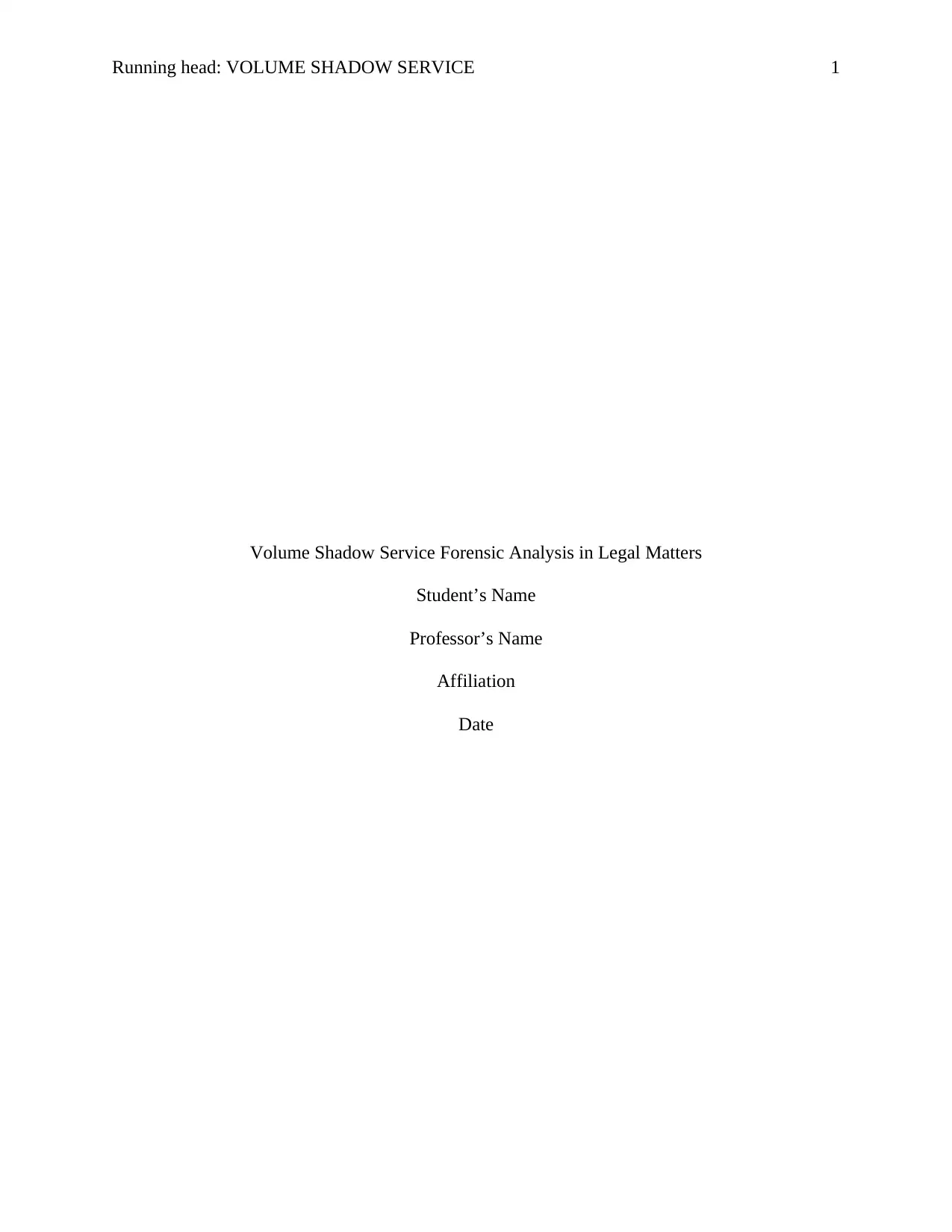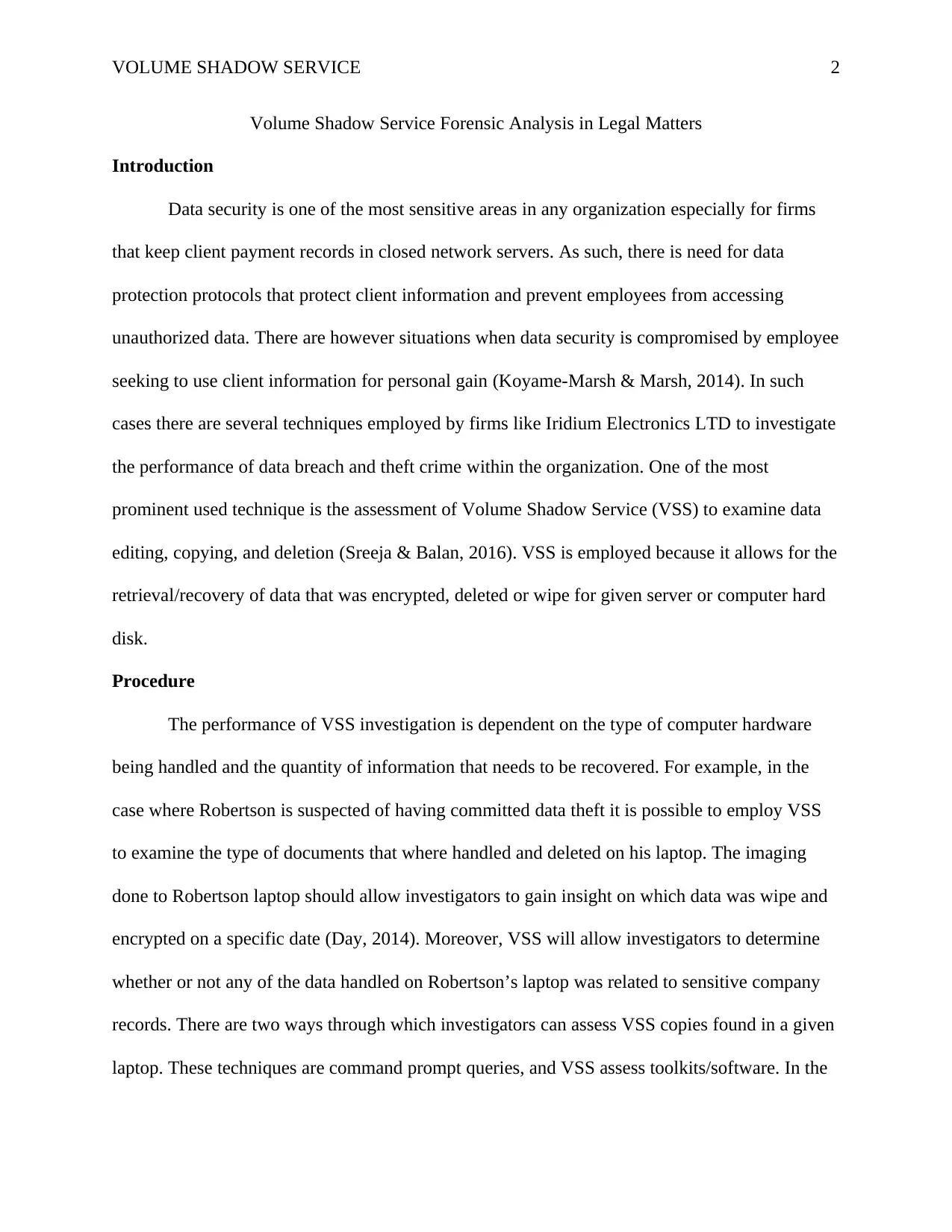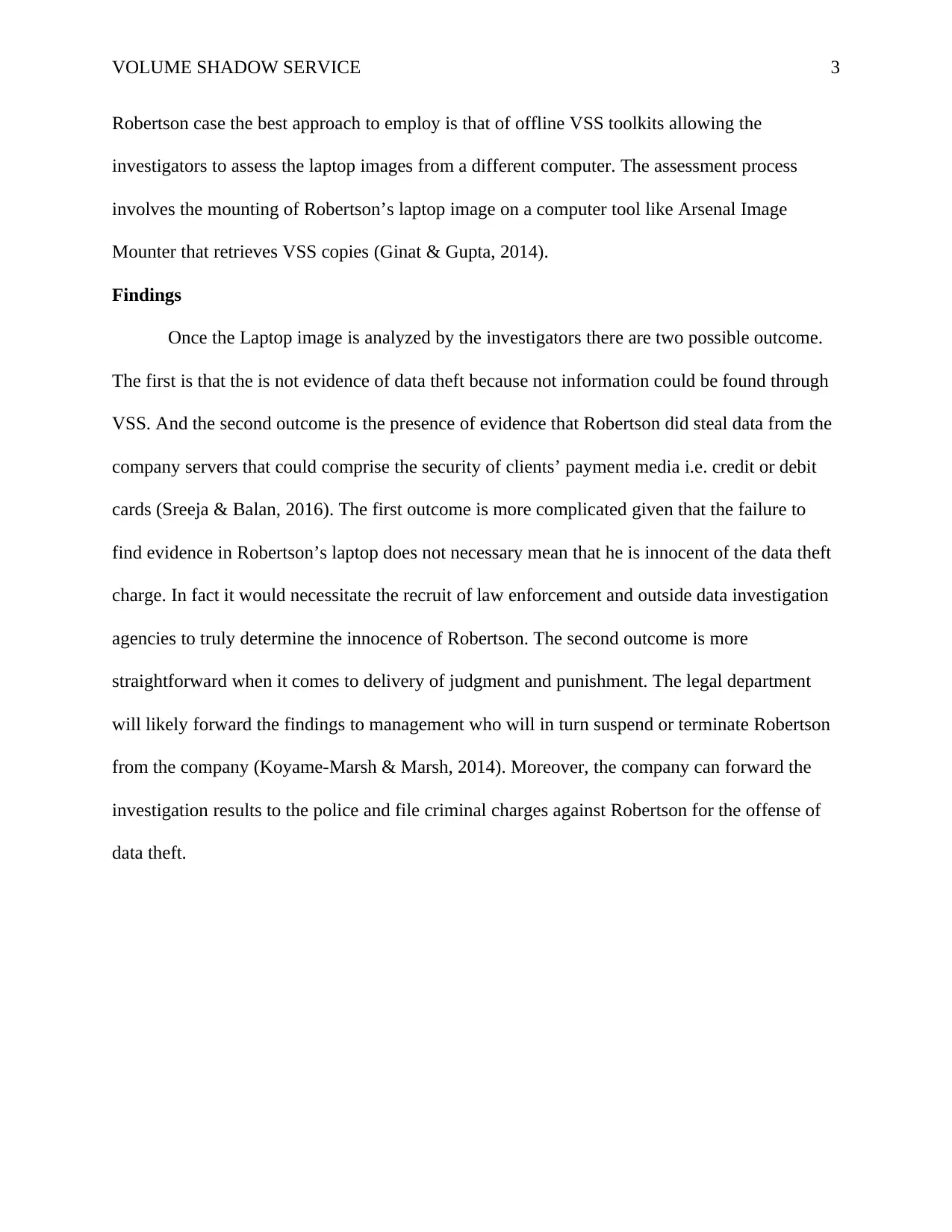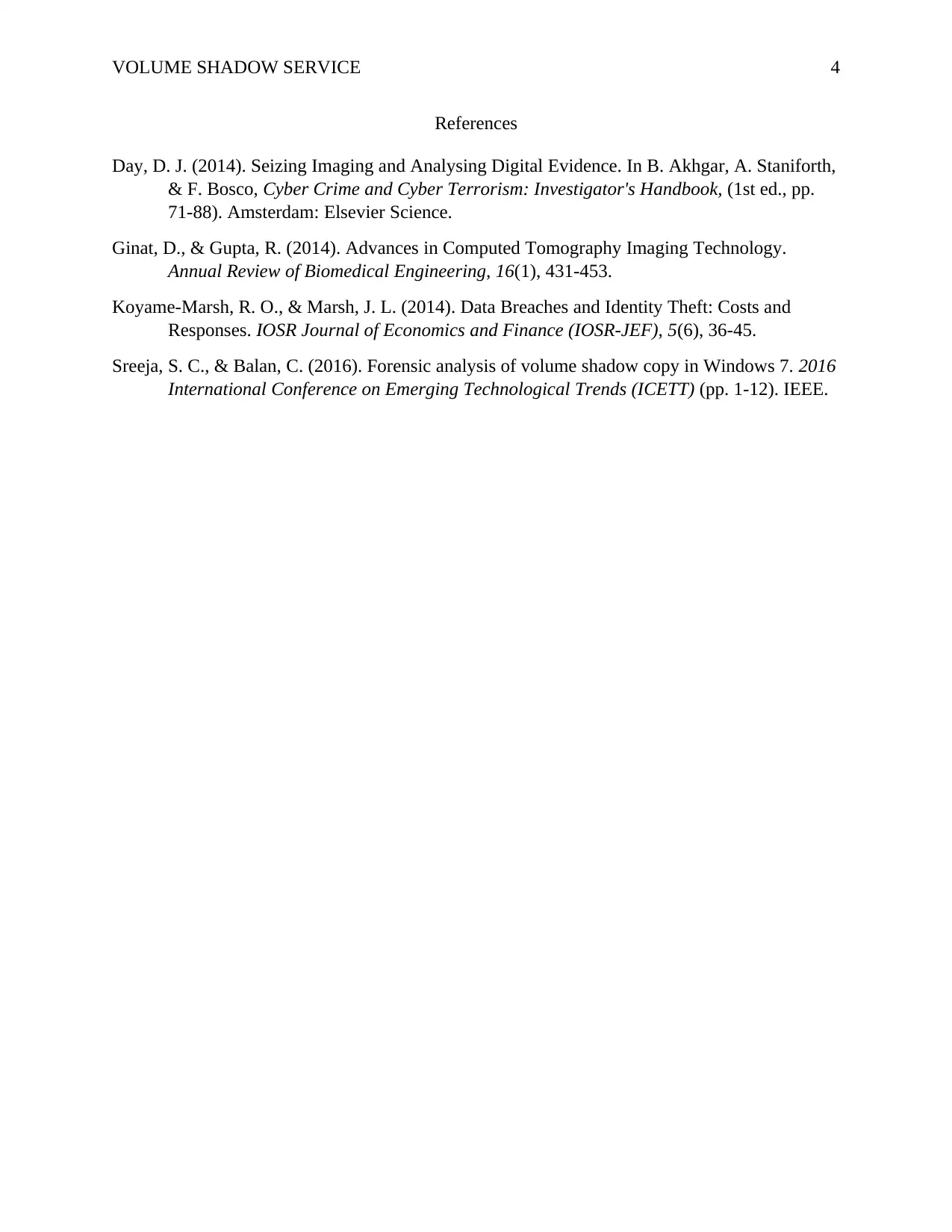Volume Shadow Service Forensic Analysis in Legal Matters Report
VerifiedAdded on 2022/08/27
|4
|778
|17
Report
AI Summary
This report focuses on the forensic analysis of the Volume Shadow Service (VSS) in the context of legal matters, particularly within organizations dealing with sensitive client data. It emphasizes the importance of data security and the potential risks associated with data breaches and theft. The report details the procedures involved in VSS investigations, highlighting how investigators can examine data editing, copying, and deletion activities on a computer, especially in cases of suspected data theft. It describes the use of VSS to recover deleted or encrypted data, providing insights into the type of documents handled and the actions taken on a specific device. The report also outlines the methodologies for assessing VSS copies, including command prompt queries and offline VSS toolkits. The findings of a VSS analysis are discussed, differentiating between outcomes with and without evidence of data theft, and the subsequent legal and organizational actions that may follow. The report underscores the significance of VSS in providing crucial evidence in data breach investigations and its role in informing legal judgments and company disciplinary measures.
1 out of 4





![[object Object]](/_next/static/media/star-bottom.7253800d.svg)